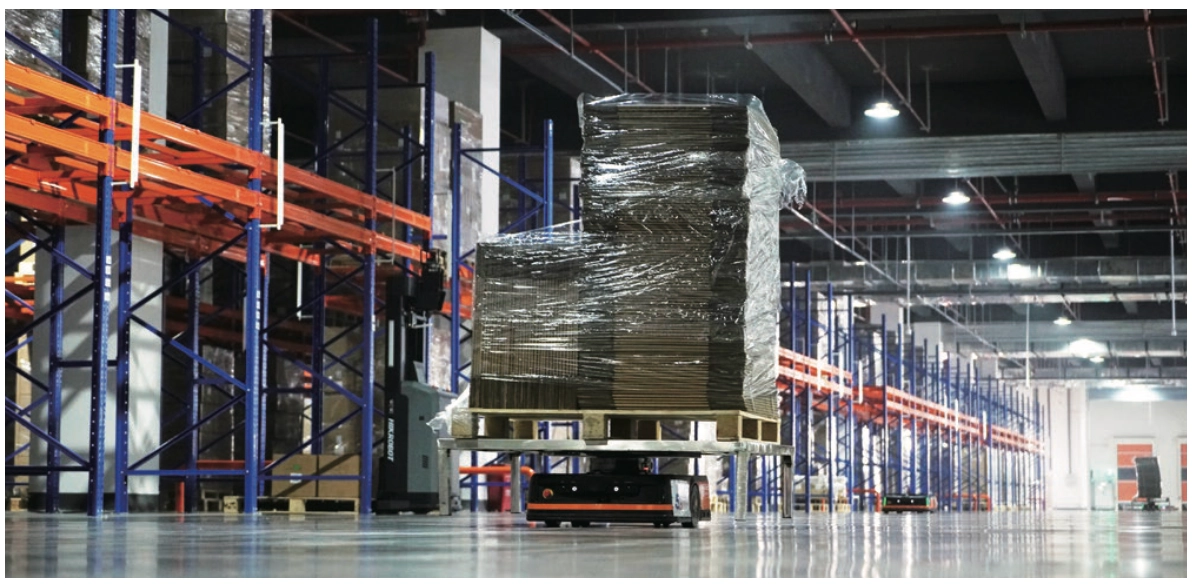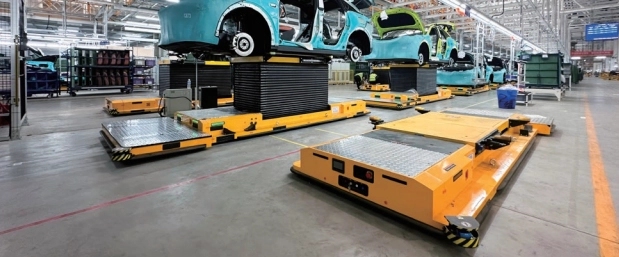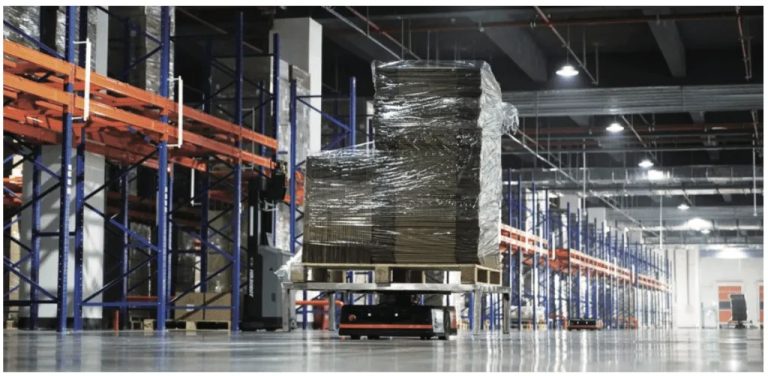
Not sure which robot is best for your business? Check out how AMR and AGV robots stack up in moving stuff, handling heavy loads, and bending to your needs. They can make your work super smooth and fast!
What Are AMR and AGV Robots and How Are They Different?
AMR and AGV robots are cool machines that change how factories and warehouses work. They move stuff around easily, but they’re not the same. Let’s see what makes them special.
What Makes Autonomous Mobile Robots (AMRs) Cool
AMRs are super smart robots. They move around without needing fixed paths. They use sensors, cameras, and AI to decide where to go. They dodge things in their way, adjust to new layouts, and work safely with people. For example, 海康机器人’s AMRs helped a factory move raw materials, packaging, and finished goods from one spot to another. This made the whole place smarter and saved workers’ time.
What Makes AGVs Awesome
AGVs follow set paths, like magnetic strips or QR codes. They’re great for jobs that stay the same every day. They don’t think as much as AMRs, but they’re super reliable in places with steady setups. AGVs shine in 3C manufacturing (like phones and computers) for fast, exact, and flexible moving. They help build smart factories.
Big Differences Between AMRs and AGVs
Both robots move stuff, but they work differently. AMRs figure out paths on their own. AGVs need tracks or markers to follow. AMRs are great in messy or changing places. AGVs rock in spots with fixed routes.
Why Knowing the Difference Helps
Picking the right robot depends on your work setup. AMRs bend to changes, while AGVs stick to the plan. Both make moving stuff easier, but they fit different jobs.
Which Robot Is Better for Heavy Jobs?
When you’re moving big stuff like car parts or heavy molds, the right robot keeps things safe and fast.
Carrying Big Loads and Staying Tough
Heavy-duty AGVs, like HMRs, are champs at moving big things. They can carry 3 to 5 tons, like molds or metal plates. They’re super safe and keep work flowing smoothly. They come with automatic obstacle avoidance systems to dodge stuff in their way. Applicable scenarios: Automotive chassis, stamping parts handling – molds, heavy metal sheet transfer. Technical features: Supports loads of 3 to 5 tons and is equipped with an automatic obstacle avoidance system.
Moving Through Tricky Places
AGVs do great with heavy loads on set paths. But AMRs are better in tough spots, like factories with many floors or lots of people walking around. AMRs connect smoothly with WMS systems to manage storage in raw material, staging, line-side, and finished goods areas.
Power and Battery Life
Both robots use batteries, but they handle power differently. AMRs have smart charging tricks to keep working without needing a person to plug them in. AGVs might need planned breaks unless they have auto-charging stations.
Why Heavy Jobs Need the Right Pick
Heavy jobs need strong robots. AGVs are great for steady paths. AMRs handle crazy layouts better. Both keep big loads safe and moving.
Are AMRs or AGVs Better for Light Jobs?
Not every job involves huge stuff. For lighter tasks, like putting together electronics or moving things in a warehouse, being quick and bendy is key.
Bendy and Growing for Small Loads
AMRs are awesome for light jobs because they’re easy to change. You can reprogram them fast or use them in different areas without changing your building.
Working Well in Changing Spaces
In places like electronics factories where setups move a lot, AGVs with flexible lines are used for fast, exact work on phones or computers. But AMRs are even bendier. They change paths right away using sensor info.
Saving Money for Small Jobs
For small businesses or startups with tight budgets, a few smart AMRs cost less than setting up a whole AGV track system. They’re a cheap way to start.
Why Light Jobs Love These Robots
Light jobs need quick, flexible robots. AMRs win for changing spaces, while AGVs are great for steady tasks. Both make small jobs easier.
How Do Setup and Upkeep Compare for AMRs and AGVs?
Getting robots into your work and keeping them running is a big deal when picking one.
Setting Up and Fitting with Your Systems
AGVs need stuff like guide paths or markers, which takes time to set up. AMRs, on the other hand, work right away with systems like WMS or WCS without changing your place.
Keeping Them Running
AGVs use parts like magnetic strips that wear out, so they need fixes more often. AMRs use sensors, which need less upkeep over time.
Updating Software and Staying Flexible
AMRs get smarter with online updates to their AI. This keeps them ready for new needs. AGVs are less bendy and might need bigger changes to stay current.
Why Setup and Upkeep Matter
Easy setup and low upkeep save time and money. AMRs are simpler to start, while AGVs need more planning but work great for fixed jobs.
Can These Robots Boost Work in Different Industries?
AMR and AGV robots make work faster and better, but they shine in different situations.
Uses in Factories, Warehouses, and Shipping
Heavy AGVs like HMRs move big stuff like metal sheets, molds, or machines. They cut injury risks and speed up work lines. AMRs are great in places like chip factories or online stores for picking orders and moving stock because they think for themselves.
Making Work Safer
Both robots handle risky jobs, like carrying heavy loads or moving through busy spots. This cuts down on worker injuries and keeps work steady. Liberate heavy physical labor and ensure safety.
Helping Workers Do More
Using robots lets workers focus on big tasks, like checking quality or helping customers. This makes your whole work process smoother and better.
Why Robots Are a Big Deal
Robots make industries faster and safer. AMRs fit changing spaces, while AGVs rock steady jobs. Both help your business shine.
Why Choose Wesar as Your Smart Factory Helper?
When you want to add robots, picking a trusty partner is key. Wesar is a top choice for awesome solutions.
What Wesar Offers
Wesar has tons of cool robots, like conveyor robots (CMR), forked robots (FMR), and latent robots (LMR). Each one is made for specific jobs in different industries.
Building Robots Just for You
Wesar’s team works with you to make robots that fit your systems, like ERP. This means you get the most out of your robots from day one. Reliable AGV providers like Wesar give smooth setup and long-term help.
Always Improving and Helping
Wesar keeps making their robots smarter with new tech. They also offer great support to keep your robots running smoothly.
Why Wesar Rocks
Wesar’s robots and support make automation easy. They help your business grow and stay strong.
Final Thoughts on Choosing Between AMR and AGV Robots
Your choice between AMR and AGV robots depends on your workplace. Got steady paths and heavy stuff? Pick AGVs. Need to move around changing spaces? Go with AMRs. Both make work faster and safer, but the right one fits your needs best.
FAQs About AMR and AGV Robots
Q1: What’s the Main Perk of AMRs Over AGVs?
AMRs are super bendy. They move using sensors without needing fixed tracks or big changes to your place.
Q2: Can AGVs Act Like AMRs?
Some new AGVs have a bit of smart moving, but they can’t match AMRs’ full flexibility without big upgrades.
Q3: Are These Robots Safe Around People?
Yup! Both have safety features. The automatic obstacle avoidance systems make them extra safe for working with people.









